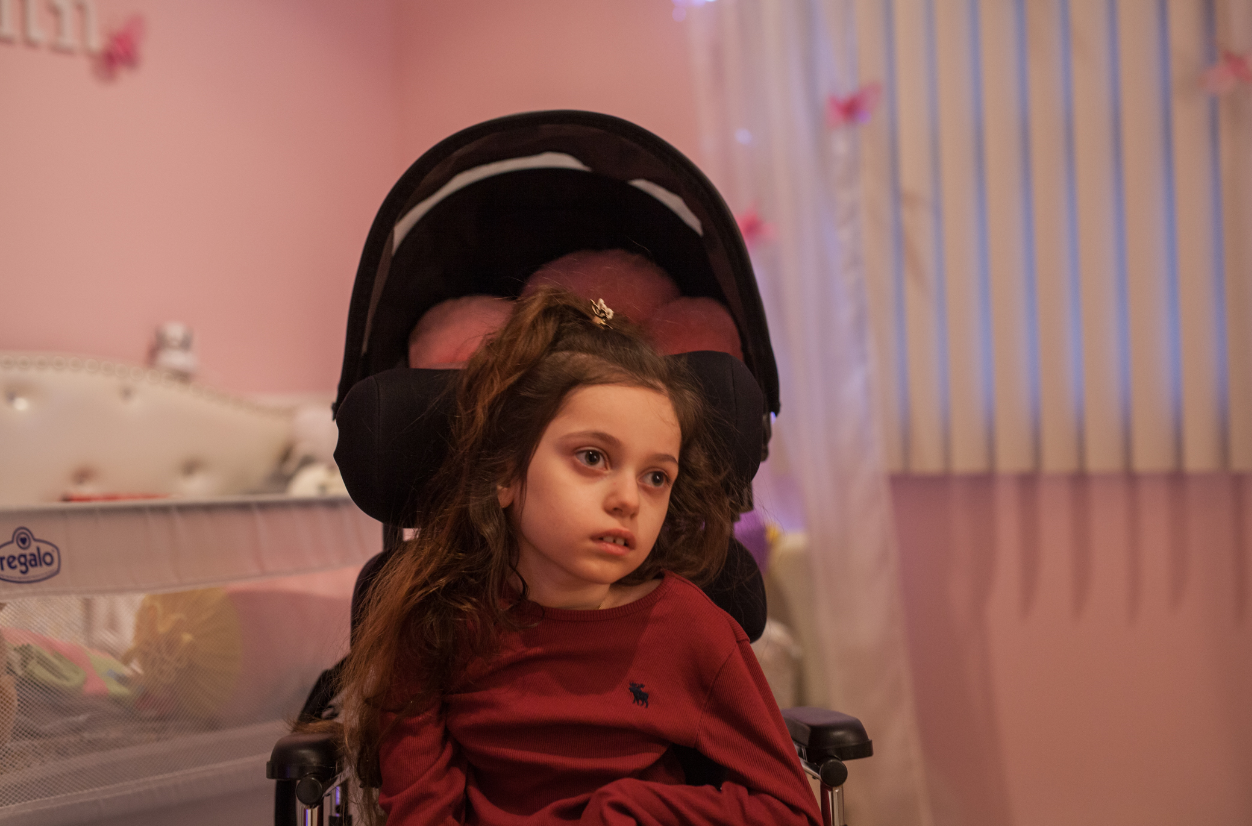
Katelynn, Age 10
Neconset, NY
“Look!” says Ryan proudly, “Katelynn is holding my fingers!” He raises his hand high above Katelynn’s head. Ryan is Katelynn’s twelve-year-old older brother and her greatest admirer. His mouth breaks into a grin as he lowers her fingers and rests them on her lap. He kisses her on the forehead. “I love you, Katelynn.” In the kitchen, their father, Gary, is preparing his famous spaghetti and marinara sauce, while their mother, Kathy secures Katelynn in her stroller in preparation for feeding her dinner. Ryan hops over to the keyboard to play music that fills the house with pre-holiday cheer. Tonight its butternut squash soup for Katelynn. Kathy stirs a nutritional supplement into her bowl for extra calories. Feeding Katelynn soup, one spoonful at a time, takes at least an hour. “Open up!” says Kathy lovingly. Katelynn spots the spoons coming toward her and opens her mouth. Kathy uses a vibrating wand to tickle Katelynn’s nose and cheeks to help her remember to swallow. “She loves food,” says Gary. “Doctors have told us to get her a g-tube to make feeding her faster, but we don’t want to take away one of the only things Katelynn can still enjoy.”
Suddenly and without warning, Katelynn makes jerking movements. Her arms and legs stiffen, with one arm swinging back and forth in a rhythmic motion against the table. Kathy, Gary, and Ryan drop what they are doing. “She’s having a seizure,” Gary says quietly. The family surrounds Katelynn; all three of them stroke her arms, lightly touch her back and gently combing their fingers through her hair. Kathy whispers, “You’re okay. You’re okay. We are all right here with you. You are not alone.” The seizure lasts for a few minutes. When Katelynn’s limbs finally relax, her head falls to one side. “Now she’s tired,” Kathy says. She carries her to bed. Katelynn’s room is princess-themed, complete with pink walls and a white and gold headboard fit for a palace. Kathy tucks her princess in and kisses her head.



